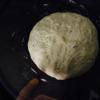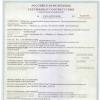Pathways of collateral circulation. Collateral circulation. Anatomical development of collaterals
We will analyze the development of collateral circulation of the heart vessels using the example of atherosclerosis of the coronary arteries. Coronary atherosclerosis has certain patterns of development: atherosclerotic plaques develop, first of all, in places most exposed to mechanical pressure or stretching or impact of a pulse wave. The angiographic picture of atherosclerosis of the coronary arteries consists of symptoms of arterial patency disorders and symptoms that reflect compensation processes.
The most important signs include, first of all, narrowing of the arteries or their occlusion, marginal filling defects or their equivalent - uneven contrasting of the vessel. With atherosclerosis, there may be significant tortuosity of the coronary arteries. The tortuosity of the circumflex branch of the left coronary artery has the greatest diagnostic value, since its shape is least associated with phase changes in the configuration, and the size of the heart.
A sign of atherosclerosis is uneven lumen of the coronary artery. Normally, the arteries gradually narrow distally. With atherosclerosis, they sometimes have a cylindrical shape, in some places there are narrowings with subsequent expansions.
Compensation for disturbed coronary blood flow is primarily collateral circulation.
The number and diameter of collaterals increase depending on the severity of the atherosclerotic process, especially they are expressed at the border of the myocardial zones fed by the left and right coronary arteries, as well as along the edge of the ischemic zone.
Anatomically, the coronary arteries are anastomosing. In a healthy heart, there are a huge number of intra- and intercoronary anastomoses, however, coronary anastomoses do not function normally. Intracoronary anastomoses connect the branches of one coronary artery or several branches of the pool of one coronary artery, intercoronary - pools of the right and left coronary arteries. Intracoronary anastomoses within one branch are presented in the form of short arterial shunts connecting segments of one vessel with a small segmental occlusion. With an extended blockage, intracoronary anastomoses are presented in the form of long bonds connecting one of the branches to another branch of this artery. Short shunts are formed from tiny vessels that lie in the epicardium around the coronary artery and expand in the presence of a small segmental occlusion. The value of this kind of anastomosis is small, since they are unlikely to provide sufficient blood flow. Of greater importance are anastomoses of a different kind, connecting segments of the arteries through the lateral branches. Thus, in case of obstruction of the anterior interventricular or circumflex branch, compensatory blood flow is carried out through the anastomoses of the diagonal branches with the marginal branch of the circumflex artery. In the extreme left type of circulation, when the posterior interventricular branch is formed by the circumflex artery, the blood flow can be carried out through the septal branches, which in this case are intracoronary anastomoses.
Intercoronary anastomoses are numerous and connect the basin of the right and left coronary arteries. Particularly intense is the intercoronary blood flow through the septal branches, through the branches of the pulmonary cone and the branches to the right ventricle. On the diaphragmatic surface, the branches of the right coronary artery are anastomosed with the branches of the circumflex branch of the left coronary artery.
In the system of coronary arteries, the following main ways of collateral circulation can be distinguished (Fig. 30.).
- 1. Anastomoses connecting the anterior and posterior interventricular branches. This path is the most common (in 90% of all collaterals). Usually these anastomoses connect the right coronary artery with the anterior interventricular branch.
- 2. Anastomoses of the anterior interventricular branch of the left coronary artery with the right coronary artery in the region of the anterior wall of the right ventricle. Especially great importance have anastomoses with a conical branch, which can depart either from the right coronary artery, or an independent trunk in the region of the right coronary sinus of the aorta. These anastomoses in the area of the base pulmonary artery form the so-called Thebesia-Viessen circle.
- 3. Anastomoses between the anterior interventricular and circumflex branch of the left coronary artery.
- 4. Anastomoses between the right coronary artery and the circumflex branch of the left on the diaphragmatic surface of the left ventricle.
- 5. Anastomoses between the perforating branches of the anterior and posterior interventricular branches (as a rule, these anastomoses connect the system of the right coronary artery and the anterior interventricular branch of the left).
Fig.30.
1 - between cone branches; 2 - between right ventricular branches; 3 - between the posterior interventricular branch and the posterior ventricular branch of the circumflex branch; 4 - between the anterior and posterior partition branches; 5 - between the terminal branches of the posterior interventricular branch and branches of the posterolateral branch (branch of the obtuse edge); 6 - between the posterior interventricular and anterior interventricular branches in the region of the apex of the heart (apical anastomoses); 7 - between the first diagonal and posterolateral branches.
When assessing the state of the coronary arteries according to coronary angiography, the anatomical type of blood supply to the heart, localization, prevalence and degree of narrowing are also taken into account.
There are three main types coronary blood supply(Fig. 31):
- 1. Right type- the right coronary artery predominates. It forms the posterior interventricular branch, which reaches the apex of the heart along the posterior longitudinal groove.
- 2. Left type- blood supply to the posterior wall of the heart (including the posterior wall of the right ventricle) is carried out mainly due to the circumflex branch of the left coronary artery, which forms the posterior interventricular branch.
- 3. Uniform (balanced) type- both coronary arteries have evenly developed branches on the posterior surface of the heart and form two parallel posterior interventricular arteries.

Fig.31.
(1 - right coronary artery, 2 - left coronary artery, 3 - circumflex branch. A - left type, B - right type, C - balanced type).
The type of blood supply can significantly affect the course coronary disease hearts. So, for example, occlusions in the system of the left coronary artery are most unfavorable for the left type of blood supply.
The term collateral circulation is understood as the flow of blood into the peripheral parts of the limb along the lateral branches and their anastomoses after the lumen of the main (main) trunk is closed. The largest ones, which take over the function of the switched-off artery immediately after ligation or blockage, are referred to as the so-called anatomical or pre-existing collaterals. According to the localization of intervascular anastomoses, pre-existing collaterals can be divided into several groups: collaterals connecting the vessels of a basin of a large artery are called intrasystemic, or short paths of roundabout blood circulation. Collaterals connecting pools of different vessels with each other are referred to as intersystem, or long, detours.
Intraorganic connections refer to connections between vessels within an organ. Extraorganic (between the branches of the own hepatic artery in the gates of the liver, including with the arteries of the stomach). Anatomical pre-existing collaterals after ligation (or blockage by a thrombus) of the main arterial trunk take on the function of conducting blood to the peripheral parts of the limb (region, organ). The intensity of collateral circulation depends on a number of factors: on the anatomical features of the pre-existing lateral branches, the diameter of the arterial branches, the angle of their departure from the main trunk, the number of lateral branches and the type of branching, as well as on functional state vessels, (from the tone of their walls). For volumetric blood flow, it is very important whether the collaterals are in a spasmodic or, conversely, in a relaxed state. It is the functionality of collaterals that determines regional hemodynamics in general and the magnitude of regional peripheral resistance in particular.
To assess the sufficiency of collateral circulation, it is necessary to bear in mind the intensity metabolic processes in the limb. Considering these factors and influencing them with the help of surgical, pharmacological and physical methods, it is possible to maintain the viability of a limb or any organ in case of functional insufficiency of pre-existing collaterals and promote the development of newly formed blood flow pathways. This can be achieved either by activating collateral circulation or by reducing tissue uptake of blood-borne nutrients and oxygen.
Primarily, anatomical features pre-existing collaterals must be taken into account when choosing a place for applying a ligature. It is necessary to spare as much as possible the existing large lateral branches and apply a ligature as far as possible below the level of their departure from the main trunk. Of certain importance for collateral blood flow is the angle of departure of the lateral branches from the main trunk. Better conditions for blood flow are created at an acute angle of departure of the lateral branches, while an obtuse angle of discharge of the lateral vessels complicates hemodynamics, due to an increase in hemodynamic resistance.
Vascular drugs to improve blood circulation are prescribed by a doctor after establishing the cause of the pathological condition. In case of violation of the work of blood vessels, the brain will first suffer, then the arms, legs and the whole body. This is due to the fact that they are quite far from the heart. They can also receive great physical exertion. As a result, diseases arise that require complex treatment. In this situation, you can not do without special effective drugs.
Causes of poor blood flow

The main reasons for the deterioration of blood circulation in the vessels can be:
- A disease called atherosclerosis. In this case, a large amount of cholesterol accumulates. The cavity of the vessels from this becomes narrow.
- Heavy smokers are at risk. Nicotine settles on the walls of blood vessels and provokes their blockage. Quite often, in this case, the appearance varicose veins veins.

- A similar situation is observed in overweight people who eat a lot of fatty foods. This becomes especially dangerous after 45 years. Metabolism slows down, and fat fills the free cavity of blood vessels.
- People who are characterized by a life without sports and physical education, sedentary work. These factors contribute to the deterioration of blood circulation and the development of complex diseases.
- Diseases that require serious treatment also contribute to the deterioration of blood circulation. It could be diabetes, overweight, heart disease, hypertension, poor kidney function, spinal diseases.
- Indiscriminate and prolonged use of drugs.
In such cases, diseases of the vessels of the arms and legs develop. There is a malfunction of the brain. The patient begins to feel worse general condition health, the habitual rhythm of life is disturbed.
In order for the doctor to choose a method of treatment and prescribe effective drugs, you need to find out the cause of a person’s illness. For this, a patient examination and laboratory testing, if necessary, is carried out.
Special preparations
The drug to improve blood circulation is prescribed only by a doctor. Prescribed medications can be used externally or internally. In the first case, their action will be aimed at relieving swelling, inflammation and stopping spasm. "Internal" drugs affect the entire vascular system. Therefore, it can be not only tablets. Normalization will take place gradually.
What will improve blood circulation:
- Antispasmodics. They are effective in the appearance of spasms, able to relieve pain. If atherosclerosis is detected, it is useless to use antispasmodics. Often the doctor prescribes Cavinton, Galidor, Eufillin.
- Angioprotectors. This group of drugs improves the condition of the vessels themselves. They will become elastic and normally permeable. There is an improvement in metabolism. Such drugs include Curantil, Vasonite, Doxy-Hem, Flexital.
- Preparations from natural ingredients. In this case, we mean physiotherapy, which will be combined with other drugs. For example, Tanakan, Bilobil can be used.

- A group of drugs based on prostaglandin E1. These medicines have properties that will help normalize blood circulation, reduce blood density, and expand the vessels themselves. It can be Vasaprostan, which normalizes blood flow.
- Medicines based on low molecular weight dextran. These drugs will contribute to a better release of blood from the tissue and significantly improve its movement. Then choose Reomacrodex or Reopoliglyukin.
- Calcium channel blockers. If necessary, to influence the work of the entire vascular system, drugs such as Stamlo, Kordafen, Plendil, Norvask are chosen. In this case, the impact will occur on the vessels of the arms and legs, of course, on the central nervous system.
Medicines for circulatory disorders of the brain
Preparations for blood circulation and its improvement can be divided into several groups.
Means to improve blood flow should have the following qualities:
- the ability to expand blood vessels;
- the ability to improve the flow of oxygen into the blood;
- the ability to make the blood not so thick;
- the ability to eliminate the problem in the cervical spine, if any.
- Medicines that can improve blood circulation in the brain. At the same time, they should expand the vessels, make the blood not so viscous. To do this, use Cavinton, Vinpocetine.
- Necessary use of drugs having antioxidant properties. They will help get rid of excess fat without violating the integrity of the cells. In this case, vitamin E, Mexidol is suitable.
- Nootropics. They will restore the work of the brain, improve memory. They increase the protective functions of nerve cells, normalize their work. In this case, Piracetam, Ceraxon, Citicoline, Phezam are prescribed.
- In pharmacology, such a group of drugs is distinguished - venotonics. They are able to improve blood flow and restore microcirculation. The drugs of this group have a capillary-protective effect. It can be Diosmin, Detralex, Phlebodia.
- If there is a threat of swelling of the brain, diuretics may be prescribed. Circulation-improving drugs Furosemide, Mannitol.
- Drugs that are analogues of the histamine mediator. They improve the functioning of the vestibular apparatus, relieve the patient of dizziness. These include Betaserc, Vestibo, Betahistine.
- Taking vitamins is a must. Neurobeks, Cytoflavin, Milgamma are ideal.
- Drugs that will help restore the cervical joints. You can use Chondroitin, Artron, Teraflex.
It's pretty effective means, but it must be remembered that only after examination and examination, the doctor can make appointments. This applies to all diseases.
Features of atherosclerosis MAG (main arteries of the head)
According to the latest sad statistics, more and more people are being diagnosed with atherosclerosis. If earlier this disease was considered age-related, now it is rapidly getting younger. Its most dangerous variety is stenosing atherosclerosis of the MAG (main arteries of the head). The problem is associated with the deposition of cholesterol plaques in the blood vessels of the brain, neck and large arteries of the lower extremities. The disease is chronic and it is impossible to completely get rid of it. But measures can be taken to stop its rapid development. To do this, you need to remember the peculiarity of the course of the disease and the main therapeutic methods.
Features of atherosclerosis of the main vessels
The development of atherosclerosis is associated with the deposition of fat cells on the walls of the arteries. At the beginning, the clusters are small and do not cause serious harm. If measures are not taken in time, then the plaques grow significantly and block the lumen of the vessels. As a result, blood circulation deteriorates.
Atherosclerosis of the main arteries of the head is a serious danger to humans. As the disease progresses, there is a blockage of the vessels of the neck and head, which are responsible for the full blood supply to the brain.
A severe form of the disease may be accompanied by the destruction of the vessel wall and the formation of an aneurysm. Thromboembolism can aggravate the situation. The rupture of such an aneurysm is fraught with serious health consequences, including death.

Depending on the severity of the disease, there are two main varieties:
- non-stenosing atherosclerosis. This term refers to a condition in which the plaque covers no more than 50% of the lumen of the vessel. This form is considered the least dangerous to human life and health.
- stenosing atherosclerosis. With this course of the disease, the vessel is blocked by a plaque by more than half. This greatly impairs the blood supply to the internal organs.
The sooner the disease is diagnosed, the greater the chance of successful treatment. It is almost impossible to completely get rid of the disease, so each person needs to take measures to eliminate the factors that provoke atherosclerosis.
What factors cause the onset of the disease?
In order for the treatment of atherosclerosis of MAH to be successful, it is necessary to identify and eliminate the cause of its occurrence. Among them are:
- Increased arterial pressure.
- An excess of cholesterol in the blood.
- Diseases of the endocrine system.
- Excessive drinking and smoking.
- Problems with the absorption of glucose.
- Lack of physical activity.
- Adherence to malnutrition.
- Age-related changes in the body.
- Prolonged exposure to stressful situations.
- Overweight.
Most often, the disease affects older men. It is especially important for them to control the state of their health, adhere to the correct principles of competent nutrition and lifestyle.
Each person periodically needs to control the level of blood pressure and cholesterol in the blood. A timely medical examination will help in this.
Symptoms of atherosclerosis
Atherosclerosis of extracranial arteries is manifested by vivid symptoms. It will largely depend on the localization of plaques. If the lesion occurs in the vessels of the brain, then the following symptoms appear:
- The appearance of noise in the ears.
- Intense headaches and dizziness.
- Memory problems.
- Discoordination of movements, impaired speech. Other neurological abnormalities may also be present.
- Sleep problems. A person falls asleep for a long time, often wakes up in the middle of the night, during the day he is tormented by drowsiness.
- Change in the psyche. There is increased irritability, anxiety of a person, he becomes whiny and suspicious.
Atherosclerotic lesions can also be localized in the arteries of the extremities. In this case, the symptoms will be different. Appear the following signs diseases:
- Decreased pulsation in the lower extremities.
- Rapid fatigue during physical exertion. This is especially pronounced when walking long distances.
- Hands become cold. Small sores may appear on them.
- In severe cases, gangrene develops.
- If the vessels of the lower extremities are affected, then the person begins to limp.
- The nail plates become thinner.
- There is hair loss on the lower extremities.
Symptoms of atherosclerosis MAG may have varying degrees expressiveness. At the initial stage, it is possible to identify the problem only during a medical examination.
If you find the first signs of the disease, you should immediately consult a doctor. Only under the condition of a timely diagnosis will it be possible to stop the development of the disease.
Making an accurate diagnosis
It is possible to identify the defeat of the main arteries of the head only during a full medical examination. Specialists need to determine the localization of the problem, the parameters of the formed plaque, as well as the presence of proliferation of connective tissue.

The following diagnostic methods are used:
- General and biochemical analyzes blood.
- Ultrasonography. Survey underway vascular system which is responsible for the blood supply to the brain. The carotid and vertebral arteries are examined. The specialist determines their condition, diameter, change in lumen.
- Magnetic resonance imaging. This is a survey that allows you to study in great detail the structure of the arteries of the brain, neck, limbs. Modern equipment guarantees taking pictures in various projections. This technique is considered the most informative.
- Angiography. Allows you to study all the pathologies of the vascular system. A specialized contrast agent is injected into the patient's blood. This is followed by an X-ray examination.
The specific method of examination is chosen by the doctor individually for each patient. This takes into account the characteristics of the body, as well as the equipment that the medical institution has.
How is the therapy carried out?
non-stenosing atherosclerosis early stages treatable. With an integrated approach and strict observance of all the prescriptions of a specialist, it is possible to restrain the development of the disease.

The following methods are currently the most effective:
- Medical treatment. It involves taking specialized medications.
- Surgical intervention. This procedure is associated with a risk to the life and health of the patient. It is used only in severe cases, when all other methods of treatment are ineffective. Non-stenosing atherosclerosis is not surgically treated.
- Lifestyle adjustment. To stop the development of the disease, it is necessary to give up bad habits, especially smoking. You should minimize the consumption of fatty, fried, smoked foods. You need to move more, go in for sports, enroll in the pool. In this case, the load should be moderate. It is best to consult with a specialist.
- Diet food. Experts recommend adhering to special dietary rules. This will help reduce the amount of cholesterol entering the body.
- exercise therapy. There is a specialized set of exercises that helps restore normal blood supply to all segments of the brain and limbs.
- Health monitoring. It is necessary to regularly measure blood pressure, monitor the concentration of cholesterol in the blood. All comorbidities should be treated promptly.
Successful treatment is possible only if all negative factors are eliminated. The patient should avoid stressful situations, eat right and walk more in the fresh air. At the same time, it is imperative to strictly follow all the recommendations of the doctor.
What medicines are used for therapy
Today, several groups of drugs have been developed that have a positive effect in the treatment of atherosclerosis of the main vessels of the brain:

- Antiplatelet agents. Drugs of this type prevent blood platelets from sticking together, which reduces the risk of developing thrombosis. Such funds are prohibited for use in renal and hepatic insufficiency, pregnancy, peptic ulcer and hemorrhagic stroke. The most popular drugs in this group are Trombo-ass, Cardiomagnyl, Plavix and so on.
- Drugs that reduce blood viscosity. They help blood flow better through narrowed places. These include Sulodexide. Phlogenzym and others.
- Preparations based on nicotinic acid. They are designed to improve circulation.
- Medications that lower the concentration of cholesterol in the blood. With their help, non-stenosing atherosclerosis can be effectively treated. Among them are Crestor, Torvacard and others.
- Means to enhance collateral circulation. This group includes Solcoseryl, Actovegin and some others.
- Drugs to relieve symptoms. It can be anti-inflammatory and analgesics.
Drug therapy will take at least two to three months. Specific dosage and duration of therapy is determined by a specialist for each patient.
Patients suffering from atherosclerosis of the arteries of the brain are shown a life-long intake of acetylsalicylic acid. These drugs will help minimize the risk of developing thrombosis.
Treatment with surgical methods
Cerebral atherosclerosis in severe cases is treated with surgical intervention. This technique is used in the stenosing type of the disease. There are three main ways to carry out the operation:
- Shunting. During this operation, the surgeon creates an additional blood flow near the damaged area. Thus, it is possible to restore normal blood flow.
- Stenting. This operation involves the installation of a special implant, with which it is possible to restore normal blood flow.
- Balloon angioplasty. The procedure involves the introduction of a specialized cartridge into the vessel. Pressure is applied to it, which expands the affected vessel.
A specific technique is chosen by a specialist based on the patient's state of health, as well as in which of the segments of the vascular system the lesion is localized.
Physiotherapy
Non-stenosing atherosclerosis responds well to treatment if the main therapy program is supplemented physical therapy. It is best to conduct a lesson with a specialist.

But some exercises can be performed independently:
- Walk with measured steps around the room. At the same time, make sure that your blood pressure does not rise.
- Stand up straight. Exhale slowly and tilt your head back. At the same time, try to bend the cervical spine as much as possible. Hold this position for a couple of seconds. After that, slowly return to the starting position. Repeat the same procedure with the head tilted forward.
- Stand up and straighten your spine as much as possible. Place your hands on your chest. On the count of one, raise your hands up, stretch to the ceiling. On the count of two, return to the starting position. Repeat this exercise 12 times.
- Stand up straight. Make slow tilts of the body to the left and right sides. Make sure that the slope is made on the exhale, and return to the starting point on the inhale.
- Sit in a high back chair. Try to relax. On the count of one, take one leg out to the side. Return to the original pose. Similar actions repeat with the other leg.
By repeating these exercises regularly, you can alleviate the course of the disease. They allow you to stimulate blood circulation and increase the tone of the vascular wall.
Folk methods of treatment
You can supplement the main therapy program with the help of funds traditional medicine. They cannot act as the only way of therapy.

Among the most effective recipes against atherosclerosis are:
- Dilute a teaspoon of birch buds in a glass of boiling water. Boil the resulting composition for 25 minutes. After that, leave the product for a couple of hours to infuse. Take the prepared composition three times a day in an amount of 100 ml.
- Pour a teaspoon of dried hawthorn flowers into a glass of water. This composition must be boiled for about 25 minutes. After that, it can be filtered. Wait until the broth cools down. It is taken in half a glass three times a day.
- Squeeze the juice from one onion. Combine it with natural honey. One spoonful of honey is needed for one spoonful of juice. Add some water to make the composition liquid. It is necessary to take such a remedy one spoonful three times a day.
Such simple tools will help increase efficiency traditional treatment. Sometimes they can provoke allergic reactions so you should consult your doctor before using them.
Dietary diet
During treatment, patients with atherosclerosis are shown to follow a special diet. This is the only way to reduce the amount of cholesterol in the blood. You must adhere to the following recommendations:
- The use of foods enriched with iodine, such as seaweed, is recommended.
- A complete rejection of animal fats is shown. The lack of protein can be filled with legumes.
- Eat more diuretic foods. These include watermelons, apples, melons and others.
- The diet should include more vegetables, fruits, nuts, berries.
- Chicken and turkey are allowed. Fatty meats, as well as offal are strictly prohibited.
- You will have to give up sweets, coffee, strong tea, chocolate, canned foods.
Compliance with the principles proper nutrition help to stop the development of the disease and enhance the effect of medicines. At the first manifestations of atherosclerosis, you should immediately seek help from a specialist. The sooner a problem is identified, the greater the likelihood of maintaining health.
Atherosclerosis of the arteries of the lower extremities and its treatment
With atherosclerotic changes, cholesterol is deposited in the wall of blood vessels. Then it grows connective tissue and a plaque is formed that narrows the lumen of the artery and prevents the blood supply to the organ or tissue. In the structure of all target organs, this pathological process is most often formed in the vessels of the heart, the second place belongs to the vessels of the neck and brain. Atherosclerosis of the arteries of the lower extremities occupies an honorable third place, both in terms of frequency of occurrence and significance.
Risk factors
Since atherosclerosis is a systemic disease, the causes of damage to various arteries, including the lower extremities, are similar. They include:
- smoking;
- obesity and hyperlipidemia;
- hereditary factor;
- nervous tension;
- hormonal disorders (climax);
- diabetes;
- hypertension.
A necessary condition for the formation of a plaque is a combination of risk factors and local changes in the artery wall, as well as the sensitivity of receptors. Atherosclerosis of the vessels of the lower extremities develops somewhat more often against the background of local pathologies (condition after frostbite, trauma, surgery).
Classification
- The classification of atherosclerosis of the arteries of the lower extremities is based on the degree of impaired blood flow and manifestations of ischemia. There are four stages of the disease:
- At the initial stage, pain in the legs is provoked only by severe physical exercises. In the second degree of blood flow disturbance, pain occurs when walking for about 200 meters.
- At the third stage of the pathological process, the patient is forced to stop every 50 meters.
- The terminal stage is characterized by the appearance of trophic changes in tissues (skin, muscles), up to gangrene of the legs.
The nature of the lesion can be stenosing, when the plaque only covers the lumen, or occlusive, if the artery is completely closed. The latter type usually develops with acute thrombosis of the damaged plaque surface. In this case, the development of gangrene is more likely.
Manifestations
The main symptom of damage to the vessels of the legs is pain in the calf muscles that occurs when physical activity or at rest.
In another way, this symptom is called intermittent claudication, and it is associated with ischemia of muscle tissue. With atherosclerosis of the aorta in its terminal section, the symptoms are supplemented painful sensations in the muscles of the buttocks, thighs and even the lower back. In half of patients with Leriche's syndrome, there is a violation of pelvic functions, including impotence.
Very often on initial stages the disease is asymptomatic. In some cases, there may be a violation of the blood supply to the surface tissues, which consists in cooling the skin and changing its color (pallor). Paresthesias are also characteristic - crawling, burning sensations and other sensations associated with hypoxia of nerve fibers.
As the disease progresses, the nutrition of the tissues of the lower extremities deteriorates, and non-healing trophic ulcers, which are harbingers of gangrene.
With acute occlusion of the arteries, there is an intense pain syndrome, the affected limb becomes colder and paler than the healthy one. In this case, decompensation of the blood supply and tissue necrosis occur quite quickly. Such differences in the rate of onset of symptoms are due to the fact that during the chronic process, collaterals have time to form, which maintain the blood supply at an acceptable level. It is due to them that sometimes with occlusion of the artery, the signs of the disease are slightly expressed.
Diagnostic methods
During a routine examination of the patient, one can suspect a violation of the blood supply, which is manifested by a cooling of the affected limb, a change in its color (at first it turns pale, then becomes purple). Below the constriction, the pulsation is markedly weakened or completely absent. In the terminal stage of the process, trophic changes in the skin and gangrene appear.
At instrumental diagnostics atherosclerosis, the most informative method is angiography. During it, a contrast agent is injected into the femoral artery, and then under control x-rays take an image. Thanks to angiography, you can clearly see all the narrowing in the vessels and the presence of collaterals. This manipulation is invasive and is contraindicated in patients with severe kidney failure and allergy to iodine.
Doppler ultrasound is the simplest and most informative diagnostic method that allows you to determine the percentage of narrowing of the artery in 95% of cases. During this study, a drug test may be performed. After the introduction of nitroglycerin, the spasm of the vessel becomes less, which makes it possible to determine the functional reserve.
An additional diagnostic method is tomography with contrast and determination of the ankle-brachial index. The latter is calculated based on data on the pressure on the brachial artery and the vessels of the lower leg. By the degree of decrease in this indicator, one can almost always judge the severity of the lesion.
Treatment
Treatment of atherosclerosis of the vessels of the lower extremities becomes much more effective if it is possible to convince the patient of the need to give up bad habits, in particular smoking. At the same time, it is desirable to comply healthy lifestyle life and try to reduce the impact of other risk factors. An important role is played by the observance of a special diet designed for patients with atherosclerosis. At the same time, nutrition should be complete and balanced, but the intake of animal fats and fried foods should be limited.
Therapeutic
Among the drugs used for atherosclerosis of the vessels of the legs, the most important are:
- Disaggregates (aspirin) that prevent the formation of blood clots on the surface of the endothelium or damaged plaque.
- Drugs that improve the rheological (fluid) properties of blood. These include reopoliglyukin and pentoxifylline. With decompensated ischemia, they are administered intravenously, then switching to the use of tablets.
- Antispasmodics (no-shpa), which reduce the narrowing of the artery and thereby improve blood circulation.
- Anticoagulants (heparin) are prescribed during the period of decompensation or in acute thrombosis.
- In some cases, thrombolytics (streptokinase, actilyse) are used, but their use is limited due to the possible development of bleeding and insufficient effectiveness.
Additional methods of therapeutic influence are hyperbaric oxygenation, which increases blood oxygen saturation, physiotherapy and treatment with the use of ozone.
Surgical
In atherosclerosis of the vessels of the lower extremities, accompanied by severe tissue malnutrition, surgical treatment is the most effective.
With minimally invasive intervention, manipulations are carried out through a puncture in the vessel. A special balloon is inflated at the narrowing site, and then the result is fixed by placing a metal stent. You can also perform the removal of blood clots, after crushing them.
In open operations, the inner lining of the vessel is removed along with atherosclerotic deposits, as well as thrombectomy. In the case of an extended lesion, bypass shunts are applied using own vessels or artificial prostheses. Most often, such operations are performed with a serious narrowing of the terminal aorta or femoral arteries. The operation in this case is called aorto-femoral prosthesis.
Palliative treatments can somewhat reduce the symptoms of the disease and improve collateral circulation. These include laser perforation, revascularizing osteotrepanation, lumbar sympathectomy, and some others.
With the development of gangrene, the limb is amputated within healthy tissues.
Folk methods
The following methods are most widely used folk treatment this pathology:
- decoctions from various herbs (common hops, horse chestnut), which must be taken orally to improve blood flow;
- phytoparabochka, which includes mint, dandelion, motherwort and viburnum;
- nettle baths improve microcirculation and reduce the symptoms of atherosclerosis.
It should be remembered that these methods are auxiliary and do not replace, but only supplement traditional treatment.
Stenosing atherosclerosis is a manifestation of the systemic formation of cholesterol plaques, characterized by impaired blood flow through the arteries of the lower extremities. The disease is irreversible and constantly progressing, so there is no cure. By following a diet and eliminating risk factors for atherosclerosis, the process can be slowed down, and bypass shunts can be used to delay the appearance of trophic tissue changes. The prognosis of the disease is determined by the degree of concomitant damage to the vessels of the heart and brain by atherosclerosis.
Principles of classification of diseases. WHO classification. Stages and outcomes of the disease. Recovery, complete and incomplete. Remissions, relapses, complications.
Disease- this is a violation of the normal functioning of the body under the influence of damaging agents on it, as a result of which its adaptive capabilities are reduced. Classification:
Etiological is based on the common causes for a group of diseases (infectious and non-infectious, hereditary and non-hereditary, gene and chromosomal mutations).
Topographic-anatomical is based on the organ principle (diseases of the heart, lungs).
According to functional systems (diseases circulatory systems, bone).
By age and gender (children and senile, gynecological and urological)
Ecological - comes from human living conditions (geographic - malaria).
By common pathogenesis (allergic, inflammatory, tumors).
Stages. 1. Latent period - from the moment of exposure to the cause until the first clinical manifestations appear. 2. Prodromal - from the first signs to the full manifestation of symptoms. 3. Peak period - full development clinical picture. Exodus. 1. Recovery is a process that leads to the elimination of disorders caused by the disease, and the restoration of normal relations between the body and the environment and the restoration of working capacity. a) complete - a state in which all traces of the disease disappear and the body fully restores its adaptive capabilities. b) incomplete - a condition in which the consequences of the disease are expressed, which remain for a long time or forever. 2. Relapse - a new manifestation of the disease after its apparent or incomplete cessation. 3. Remission - temporary or complete disappearance of manifestations (symptoms) of a chronic disease. 4. Complication is a disease that is a consequence of the underlying disease.
Heart attack. Kinds. Outcomes. Collateral circulation, types of collaterals, mechanism of their development. Significance in pathology.
Heart attack - local tissue necrosis caused by an acute violation of their blood circulation. this is a zone of coagulation necrosis, which has a pyramidal-conical (in the lung, spleen, kidney) or irregular (in the heart, brain) shape, with an outcome in a connective tissue scar. The diversity of infarcts is expressed in their subdivision into white (ischemic) and red (hemorrhagic), as well as infected and aseptic, coagulative and coagulative ones. white heart attacks - these are ischemic infarctions in organs with absolutely or relatively insufficient collaterals or in solid organs (kidney, brain, spleen, myocardium, spinal cord). Under these conditions, there is no refilling blood vessels necrotic area with blood. red are venous infarcts (in the gonads, brain, retina), as well as ischemic infarctions in organs with dual circulation and relatively sufficient collaterals (liver, lungs, small intestine). Ischemia is accompanied under these conditions by secondary blood flow from collaterals or through portal systems. With minimal penetration of blood into the peripheral vessels of an infarcted part of an organ, for example, the heart, a picture of a white infarction with a hemorrhagic corolla is possible. Exodus. Within 2-10 weeks, depending on the size of the lesion, activation of fibroplastic processes and scar formation follow. Only brain infarcts, whose cells contain a lot of lipids and tend to autolysis, proceed according to the type of coliquative necrosis, with less pronounced participation of neutrophils, microglia activation, tissue softening, and outcome in the form of a cyst, the walls of which are represented by astrocytes ("gliosis"). Most visceral infarcts are sterile. But if the cause of ischemia was an infected thrombus (septic endocarditis, sepsis), or if the primary bacterially contaminated area of the organ (lungs, intestines) underwent necrosis, then an infected heart attack will develop, with an outcome in an abscess or gangrene. Collateral circulation. Collaterals- these are bypass branches of blood vessels that provide inflow or outflow of blood bypassing the main vessel during its thrombosis, obliteration. In case of a disorder in the normal circulation caused by an obstruction in the path of blood flow in a given vessel, the existing bypass blood tracts - collaterals - are first switched on, and then new ones develop. As a result, impaired blood circulation is restored. The nervous system plays an important role in this process. Ischemia of the main arterial vessel causes collateral arterial hyperemia of a vacant character. Absolute sufficiency of collaterals can be achieved either with the help of dual blood supply (in organs with portal systems and in the lungs, with their perfusion through a. pulmonalis and a. bronchialis), or with a parallel-arc type of perfusion (limbs, circle of Willis), or, finally, with abundant collaterals (small intestine). In this regard, in the lungs, liver, limbs and small intestine, ischemic infarction is an exceptional rarity requiring additional conditions. Organs with a main blood supply and a small total diameter of collaterals have absolutely insufficient collateral circulation and, with local anemia, become a victim of ischemic necrosis. Such is the situation in the kidneys, retina, in the pool of arteries extending from the circle of Willis, especially in the middle cerebral, in the spleen, in the spinal cord in the area of vascularization from the Adamkevich artery system. Such arteries anastomose, almost exclusively, through capillaries or tiny microshunts and are referred to as "functionally terminating".
3. Asphyxia, definition, violation of the gas composition of the blood. periods of acute asphyxia. Features of etiology and pathogenesis. False asphyxia in violation of nasal breathing, its consequences. Asphyxia of newborns and its consequences.
If respiratory failure occurs acutely / subacutely and reaches the level when oxygen ceases to flow into the blood, and carbon dioxide is not removed from the blood, develops asphyxia. Causes: suffocation, blockage of the lumen of the respiratory tract, the presence of fluid in the alveoli and respiratory tract, bilateral pneumothorax, a sharp limitation of the mobility of gr.cl. Periods: 1. A rapid increase in the depth and frequency of breathing, the predominance of inspiration. Convulsions are possible, general excitation, tachycardia develops. 2. The respiratory rate decreases, the maximum amplitude of respiratory movements is maintained, the expiratory phase intensifies. Bradycardia, decreased blood pressure. 3. Reducing the amplitude of breathing and frequency until it stops completely. Then comes gasping (several convulsive breathing movements), respiratory paralysis and cardiac arrest. Blood - increased concentration of CO 2, lowering the pH to 6.8-6.5. Asphyxia of newborns and its consequences. With a long-term childbirth, the child develops an O 2 deficiency and an excess of CO 2. He begins to make respiratory movements, with which he swallows amniotic fluid, which in severe cases can lead to the death of the child. Asphyxia is the most common cause of permanent brain damage or even death within 4 weeks before and after birth. The chances of recovery in a child of any age, if asphyxia was serious, prolonged and not treated in a timely manner, are very small.
4. Violations of water and electrolyte metabolism in endocrine diseases. Types, etiology, pathogenesis.
In case of violations of the water and electrolyte metabolism with endocrine diseases, endocrine edema develops. These are systemic edema as a result of primary diseases of the endocrine glands: hypercortisolism, hypothyroidism, hyperaldosteronism. In this case, hyperactivity of the renin-angiotensin-aldosterone system is observed.
In hypothyroidism, the hydrophilicity of the connective tissue increases due to the accumulation of acid mucopolysaccharides in the dermis, which are capable of retaining water.
In the human body, the arterial circulatory system operates on the principle of "from large to small". and tissues is carried out by the smallest vessels, to which blood flows through medium and large arteries. This type is called main when numerous arterial basins are formed. Collateral circulation is the presence of connecting vessels between the branches. Thus, the arteries of different basins are connected through anastomoses, acting as a backup source of blood supply in case of obstruction or compression of the main supply branch.
Physiology of collaterals
Collateral circulation is the functional ability to ensure uninterrupted nutrition of body tissues due to the plasticity of blood vessels. This is a roundabout (lateral) blood flow to organ cells in case of weakening of blood flow along the main (main) path. Under physiological conditions, it is possible with temporary difficulties in blood supply through the main arteries in the presence of anastomoses and connecting branches between the vessels of neighboring basins.

For example, if in a certain area the artery that feeds the muscle is squeezed by some tissue for 2-3 minutes, then the cells will experience ischemia. And if there is a connection of this arterial pool with the neighboring one, then the supply of blood to the affected area will be carried out from another artery by expanding the communicating (anastomosing) branches.
Examples and vascular pathologies
As an example, one should analyze the nutrition of the gastrocnemius muscle, collateral circulation and its branches. Normally, the main source of its blood supply is the posterior tibial artery with its branches. But a lot of small branches from neighboring pools from the popliteal and peroneal arteries also go to it. In the event of a significant weakening of the blood flow through the posterior tibial artery, blood flow will also be carried out through the opened collaterals.

But even this phenomenal mechanism will be ineffective in the pathology associated with damage to the common main artery, from which all other vessels are filled. lower limb. In particular, with Leriche's syndrome or significant atherosclerotic lesion femoral artery the development of collateral circulation does not allow to get rid of intermittent claudication. A similar situation is observed in the heart: if the trunks of both coronary arteries are damaged, collaterals do not help to get rid of angina pectoris.
Growth of new collaterals
Collaterals in the arterial bed are formed with the laying and development of arteries and the organs that they feed. This happens even during the development of the fetus in the mother's body. That is, a child is already born with the presence of a collateral circulation system between the various arterial basins of the body. For example, the circle of Willis and the blood supply system of the heart are fully formed and ready for functional loads, including those associated with interruptions in the blood supply of the main vessels.
Even in the process of growth and with the appearance of atherosclerotic lesions of the arteries at a later age, a system of regional anastomoses is continuously formed, ensuring the development of collateral circulation. In the case of episodic ischemia, each tissue cell, if it experienced oxygen starvation and had to switch to anaerobic oxidation for some time, releases angiogenesis factors into the interstitial space.
Angiogenesis
These specific molecules are, as it were, anchors or markers, in the place of which adventitial cells should develop. A new arterial vessel and a group of capillaries will also be formed here, the blood flow through which will ensure the functioning of cells without interruptions in blood supply. This means that angiogenesis, that is, the formation of new blood vessels, is a continuous process designed to meet the needs of a functioning tissue or prevent the development of ischemia.

Physiological role of collaterals
The importance of collateral circulation in the life of the body lies in the possibility of providing backup blood circulation for parts of the body. This is most valuable in those structures that change their position during movement, which is typical for all parts of the musculoskeletal system. Therefore, collateral circulation in the joints and muscles is the only way to ensure their nutrition in conditions of constant changes in their position, which is periodically associated with various deformations of the main arteries.
Since twisting or compression leads to a decrease in the lumen of the arteries, episodic ischemia is possible in the tissues to which they are directed. Collateral circulation, that is, the presence of roundabout ways of supplying tissues with blood and nutrients, eliminates this possibility. Also, collaterals and anastomoses between pools allow increasing the functional reserve of the organ, as well as limiting the extent of the lesion in the event of acute obstruction.
Such a safety mechanism of blood supply is characteristic of the heart and brain. In the heart there are two arterial circles formed by branches of the coronary arteries, and in the brain there is a circle of Willis. These structures make it possible to limit the loss of living tissue during thrombosis to a minimum instead of half the mass of the myocardium.
In the brain, the circle of Willis limits the maximum volume of ischemic injury to 1/10 instead of 1/6. Knowing these data, we can conclude that without collateral circulation, any ischemic episode in the heart or brain caused by thrombosis of a regional or main artery would be guaranteed to lead to death.



















